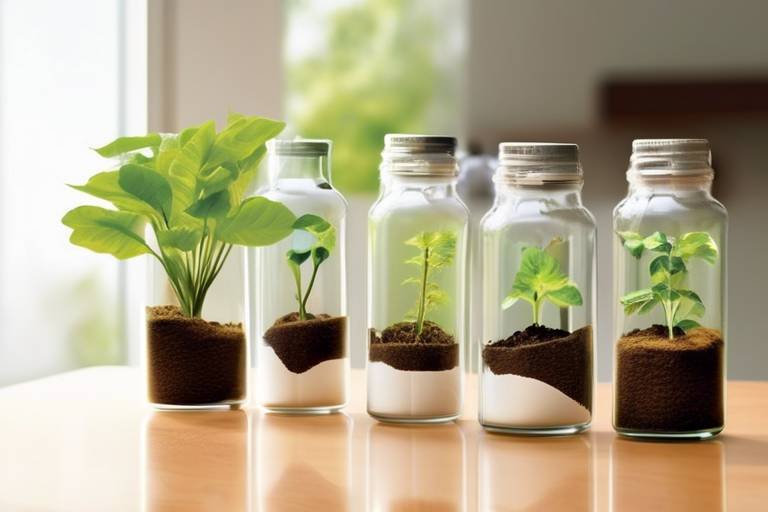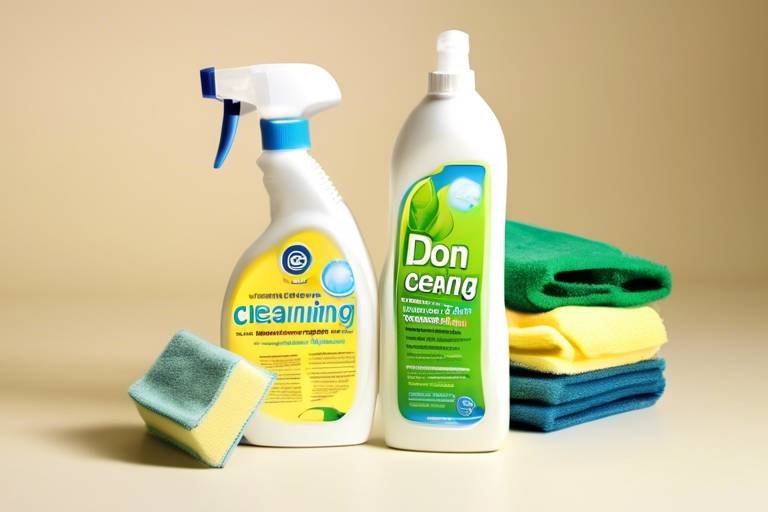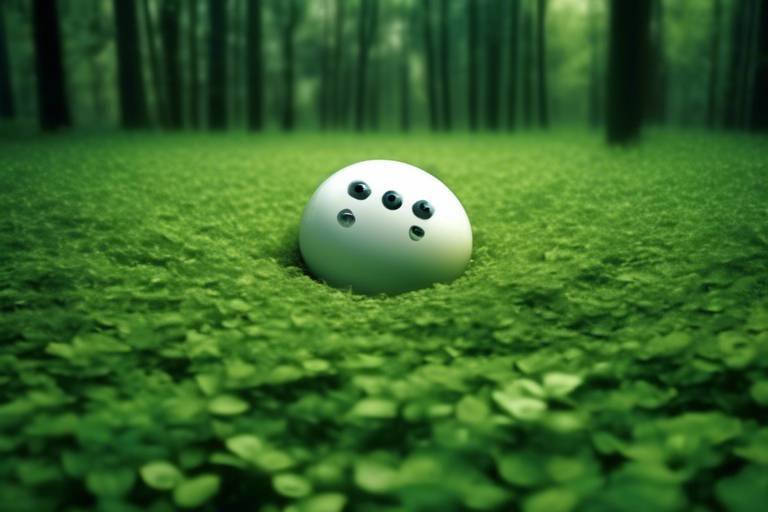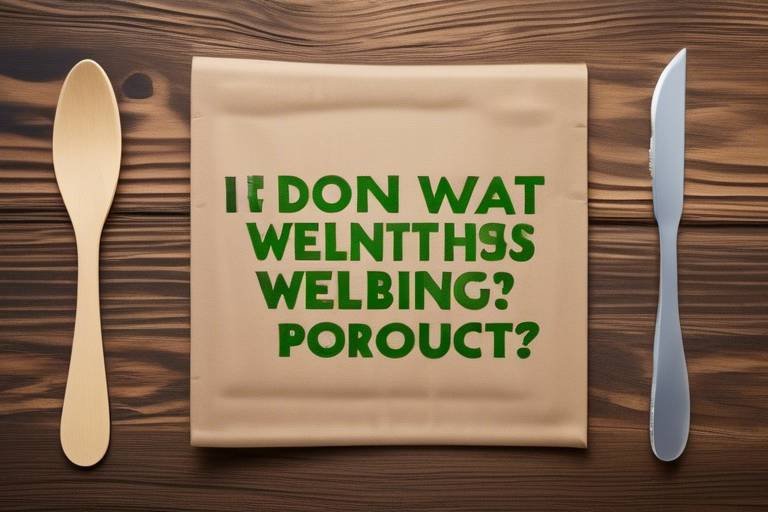Must-Have Eco-Friendly Innovations for Home Gardeners
Are you ready to dive into the world of eco-friendly gardening? If you’re like many home gardeners, you want to cultivate a lush, beautiful garden while also being kind to our planet. The good news is that there are some exciting innovations available that can help you achieve both goals. From smart irrigation systems to biodegradable plant pots, these tools not only make gardening easier but also enhance your plants’ growth and overall garden aesthetics.
Imagine transforming your gardening experience into a sustainable paradise where every plant thrives, and every drop of water counts. With the right eco-friendly innovations, you can do just that! Let's take a closer look at some must-have tools and techniques that can revolutionize your home gardening.
Water is essential for plant life, but wasting it can be detrimental to both your garden and the environment. Enter smart irrigation systems. These systems are designed to optimize water usage by adjusting the amount of moisture your plants receive based on real-time weather data and soil conditions. This means your plants get just the right amount of water they need to thrive, and you save on your water bills.
Imagine being able to control your irrigation system from your smartphone! With features like scheduling and moisture sensors, you can ensure your garden is watered efficiently, even when you’re not at home. It’s like having a personal watering assistant that never sleeps!
Have you ever thought about turning your kitchen scraps into gold for your garden? Compost bins are a fantastic way to recycle organic waste into nutrient-rich compost. By composting, you’re not only reducing landfill waste but also enriching your soil, which leads to healthier plants. It’s a win-win!
When you start composting, you’ll be amazed at how easy it is. Just toss in your vegetable peels, coffee grounds, and yard waste, and watch as they break down into a dark, crumbly substance that your plants will absolutely love. Plus, it’s a great way to teach kids about sustainability and the importance of recycling!
Want to add a magical touch to your garden at night? Solar-powered garden lights are the perfect solution. These lights harness the sun's energy during the day and illuminate your outdoor spaces at night without increasing your energy costs. They come in various styles, from elegant lanterns to whimsical fairy lights, allowing you to create the ambiance you desire.
Not only do these lights enhance the beauty of your garden, but they also provide safety by lighting up pathways and dark corners. Plus, you’ll be doing your part for the environment by reducing your carbon footprint. It’s like having a glowing garden that’s both enchanting and eco-friendly!
Water scarcity is a growing concern, and every drop counts. Rainwater harvesting systems allow you to collect and store rainwater for irrigation, significantly reducing your reliance on municipal water supplies. Imagine capturing the rain that falls on your roof and using it to nourish your plants!
These systems can be as simple or complex as you want. A basic setup might just involve a barrel to catch rainwater, while more advanced systems can include filters and pumps. Not only will you save money on your water bill, but you’ll also contribute to a sustainable water cycle in your community.
Every gardener faces pests, but you don’t have to resort to toxic chemicals to protect your plants. Organic pest control solutions are effective and safe for the environment. From natural insecticidal soaps to beneficial insects like ladybugs, there are numerous options available that keep your garden healthy without harming pollinators.
By using organic methods, you create a healthier ecosystem in your garden. It’s like inviting nature to take care of itself! Plus, you can feel good knowing that you’re protecting not just your plants, but also the environment.
If space is a concern, vertical gardening techniques are a game changer. These methods allow you to grow plants upwards rather than outwards, making them perfect for urban gardeners with limited outdoor areas. Think of it as a way to create a beautiful green wall that not only saves space but also adds visual interest to your garden.
From wall-mounted planters to trellises, vertical gardening can maximize your growing area while providing adequate sunlight and air circulation for your plants. It’s like turning your garden into a vertical oasis!
Plastic waste is a significant environmental issue, but you can make a difference with biodegradable plant pots. These pots break down naturally over time, reducing plastic waste in gardening. They support healthy root development and enrich the soil as they decompose, creating a healthier environment for your plants.
Switching to biodegradable pots is an easy way to make your gardening practices more sustainable. It’s like giving your plants a cozy home that’s good for them and the Earth!
Are you tired of using synthetic fertilizers that can harm your soil and plants? Natural fertilizers are the way to go! They enrich the soil without the harmful side effects of chemicals, promoting sustainable gardening practices. Think of them as nature’s way of nourishing your garden.
From compost to worm castings, there are many options to choose from. Each provides essential nutrients that help your plants flourish while maintaining a healthy ecosystem. It’s like feeding your plants a wholesome diet that keeps them strong and vibrant!
Want to take your gardening to the next level? Garden sensors and monitoring tools can help you track soil moisture, temperature, and nutrient levels. With this information at your fingertips, you can make informed decisions that lead to healthier plants and increased yields.
Imagine being able to check your garden’s health from your smartphone! These tools provide valuable insights that can help you optimize your gardening practices and ensure your plants are thriving. It’s like having a personal garden assistant that gives you all the information you need.
- What are the benefits of using smart irrigation systems? Smart irrigation systems help conserve water, reduce water bills, and ensure your plants receive the right amount of moisture.
- How can I start composting at home? You can start composting by collecting kitchen scraps and yard waste in a compost bin, allowing it to decompose over time.
- Are solar-powered garden lights worth the investment? Yes! They save energy costs and enhance the beauty and safety of your garden.
- What is the best way to collect rainwater? Use a rain barrel connected to your downspouts to collect rainwater for irrigation.
- How do organic pest control solutions work? They use natural ingredients or beneficial insects to control pests without harming the environment.

Smart Irrigation Systems
Imagine stepping into your garden and seeing your plants thrive, all while knowing you’re doing your part to conserve water. make this dream a reality! These innovative technologies are designed to optimize water usage, ensuring that your plants receive just the right amount of moisture they need to flourish. Instead of relying on outdated methods that often lead to overwatering or underwatering, smart irrigation systems utilize advanced sensors and automated controls to monitor soil conditions and weather patterns.
So, how do these systems work? At the heart of smart irrigation is a network of sensors that gather real-time data about your garden’s soil moisture levels, temperature, and even rainfall. This information is then processed by a central unit that determines the optimal watering schedule and duration. You can think of it as having a personal gardener who knows exactly when to water your plants, without wasting a single drop of water!
One of the standout features of smart irrigation systems is their ability to connect to your smartphone or tablet. This means you can control your garden's watering schedule from anywhere, whether you’re lounging on the couch or vacationing on a tropical beach. Imagine receiving alerts on your phone about impending rain, prompting the system to skip watering for the day. Convenience and sustainability go hand in hand with these systems!
But wait, there’s more! Smart irrigation systems can also help you save on your water bills. By ensuring that your plants are watered only when necessary, you can significantly reduce your water consumption. In fact, studies have shown that homeowners can save up to 50% on their water usage by implementing these systems. That’s not just good for your wallet; it’s fantastic for the environment too!
Let’s break down some of the key benefits of smart irrigation systems:
- Water Conservation: Efficiently manages water resources, preventing waste.
- Cost Savings: Reduces water bills by avoiding overwatering.
- Healthier Plants: Delivers precise moisture levels for optimal growth.
- Remote Control: Manage your system from anywhere using a mobile app.
In conclusion, investing in a smart irrigation system is a game changer for any home gardener. Not only does it enhance the health of your plants, but it also promotes a more sustainable approach to gardening. With technology at your fingertips, you can enjoy the beauty of your garden while playing a crucial role in conserving our planet's precious resources. So why not take the leap into the future of gardening? Your plants—and the environment—will thank you!

Compost Bins
Composting is like giving your kitchen scraps a second chance at life, transforming what would otherwise be waste into a treasure trove of nutrients for your garden. are essential tools for anyone looking to embrace a more sustainable lifestyle, and they come in various shapes and sizes to fit any garden's needs. Imagine turning banana peels, coffee grounds, and grass clippings into rich, dark compost that nourishes your plants. It’s not just about reducing waste; it’s about creating a vibrant ecosystem right in your backyard.
One of the most significant benefits of using a compost bin is its ability to recycle organic waste effectively. Instead of tossing your vegetable scraps into the trash, you can deposit them in your compost bin, where they will decompose naturally. This process not only reduces the amount of waste sent to landfills but also lowers greenhouse gas emissions, making it a win-win for the environment. Plus, the compost produced is a fantastic soil amendment, improving soil structure, drainage, and moisture retention, which in turn leads to healthier plants.
When choosing a compost bin, consider factors such as size, material, and location. Here’s a quick overview of different types of compost bins:
| Type | Description | Pros | Cons |
|---|---|---|---|
| Open Pile | A simple heap of compost materials. | Cost-effective, easy to manage. | Can attract pests, less aesthetically pleasing. |
| Bin System | Enclosed bins made from wood, plastic, or metal. | Neater appearance, better pest control. | Can be more expensive, requires maintenance. |
| Tumbler | A rotating bin that speeds up the composting process. | Fast composting, easy to turn. | Higher cost, limited capacity. |
To get started with composting, you don't need to be an expert. Just follow a few simple steps:
- Choose a suitable location for your compost bin, ideally in a shaded area to keep it cool.
- Layer your materials, starting with coarse materials like twigs or straw at the bottom for aeration.
- Add a mix of green materials (like fruit scraps and grass clippings) and brown materials (like dry leaves and cardboard).
- Keep the pile moist but not soggy, and turn it regularly to aerate the compost.
- In a few months, you’ll have rich, dark compost ready to nourish your garden.
Incorporating composting into your gardening routine not only benefits your plants but also helps foster a connection with nature. It’s a simple yet impactful way to contribute to a healthier planet. So, next time you think about throwing away those vegetable scraps, remember that they could be the key to a flourishing garden!
Q: What can I compost?
A: You can compost a variety of organic materials, including fruit and vegetable scraps, coffee grounds, eggshells, grass clippings, and leaves. Avoid meat, dairy, and oily foods, as they can attract pests.
Q: How long does it take to compost?
A: The composting process can take anywhere from a few weeks to several months, depending on factors like temperature, moisture, and the materials used.
Q: Can I compost in winter?
A: Yes, you can compost in winter! The composting process slows down, but it will continue as long as you maintain the right conditions.

Solar-Powered Garden Lights
Imagine stepping into your garden at night, greeted by a gentle glow that transforms your outdoor space into a magical wonderland. not only create an enchanting ambiance but also serve a practical purpose in enhancing safety and visibility around your home. These innovative lights harness the power of the sun, converting sunlight into energy that illuminates your garden after dark. This means you can enjoy your garden without the worry of increasing your electricity bill or contributing to environmental harm.
One of the most appealing aspects of solar-powered lights is their energy efficiency. With traditional lighting, you're often left with a hefty energy bill, especially if you have multiple fixtures. In contrast, solar lights use renewable energy, which is not only good for the planet but also good for your wallet. By installing these lights, you can significantly reduce your carbon footprint while still enjoying a beautifully lit garden. Plus, they are incredibly easy to install—most solar lights can be set up without any wiring or specialized tools. Just place them in a sunny spot, and let the sun do the rest!
When considering solar-powered garden lights, it's essential to explore the different types available. You can choose from
- Pathway lights that guide your way
- Spotlights that highlight beautiful features
- String lights for a cozy, festive feel
- Wall-mounted fixtures for added security
Another fantastic benefit of solar lights is their low maintenance requirements. Unlike traditional lights that may need frequent bulb replacements or electrical work, solar lights are designed to be durable and weather-resistant. Most models come equipped with LED bulbs that last for years, and the solar panels require minimal upkeep—just an occasional wipe down to keep them clean and functioning efficiently.
Moreover, solar-powered lights can dramatically enhance your garden's aesthetic appeal. They can be strategically placed to highlight certain plants, sculptures, or pathways, creating a stunning visual effect that draws the eye. Some models even come with color-changing features, allowing you to switch up the mood of your garden for different occasions, whether it’s a romantic dinner or a lively garden party.
In conclusion, solar-powered garden lights are a must-have innovation for any eco-conscious gardener. They not only provide beautiful illumination but also promote sustainability and energy savings. As you consider ways to enhance your garden, think about how these lights can transform your nighttime landscape into a vibrant, inviting space that you can enjoy year-round.
Q: How long do solar-powered garden lights last?
A: The lifespan of solar lights can vary, but most LED bulbs can last up to 25,000 hours. The solar panels typically last for around 5 years before they may need replacement.
Q: Do solar lights work in cloudy weather?
A: Yes, solar lights can still charge on cloudy days, though they may not reach full brightness. It's best to place them in areas that receive as much sunlight as possible.
Q: Are solar lights bright enough for security purposes?
A: While solar lights can provide adequate illumination for pathways and gardens, for security purposes, consider using brighter models or supplementing with additional lighting options.

Rainwater Harvesting Systems
Rainwater harvesting systems are a game-changer for home gardeners looking to embrace sustainability while nurturing their plants. Imagine this: each time it rains, you're not just watching the droplets fall; you're capturing that precious water to nourish your garden. It’s like having your own personal reservoir, ready to supply your plants with the hydration they crave. By installing a rainwater harvesting system, you can significantly reduce your reliance on municipal water supplies, which is not only eco-friendly but also a fantastic way to lower your water bills.
The beauty of rainwater harvesting lies in its simplicity. Typically, these systems consist of a collection surface (like your roof), gutters, and storage tanks. When it rains, water flows from your roof into the gutters and then into a storage tank, where it can be held until needed. But it’s not just about collecting water; it’s about how this water can be utilized effectively. You can use it for irrigation, watering your plants, or even for washing your garden tools. This method not only conserves water but also helps in reducing stormwater runoff, which can lead to erosion and water pollution.
Moreover, rainwater is naturally soft and free of the salts and chemicals found in municipal water supplies, making it an ideal choice for your plants. Plants tend to thrive on rainwater, as it provides them with the nutrients they need without the harmful additives. In fact, many gardeners report that their plants grow faster and healthier when watered with rainwater compared to tap water. Think of it as giving your plants a refreshing drink from nature's own cup!
Setting up a rainwater harvesting system can be as simple or as complex as you want it to be. For beginners, a basic barrel system can be a perfect start. You can easily find rain barrels that fit under your downspouts, allowing you to collect rainwater without much hassle. For those who are a bit more adventurous, you might consider installing a more sophisticated system that includes multiple barrels and filtration systems to ensure the water remains clean and safe for your plants.
Here's a quick overview of the components involved in a typical rainwater harvesting system:
| Component | Description |
|---|---|
| Collection Surface | Your roof or any flat surface that collects rainwater. |
| Gutters | Channels that direct rainwater from the roof to the storage tank. |
| Storage Tank | A barrel or tank that holds the collected rainwater. |
| Distribution System | Hoses or drip irrigation systems that deliver water to your plants. |
In addition to saving water, rainwater harvesting can contribute to a more sustainable lifestyle. It encourages a mindful approach to gardening, as you become more aware of your water usage and the environmental impact of your gardening practices. Plus, it’s a great conversation starter! When friends and family see your rainwater system in action, they may be inspired to implement their own eco-friendly practices.
In conclusion, rainwater harvesting systems are an essential innovation for home gardeners who want to embrace sustainability and improve their gardening experience. By capturing and utilizing rainwater, you not only promote a healthier garden but also contribute to a healthier planet. So, why not take the plunge? Your plants—and the environment—will thank you!
- What is rainwater harvesting? Rainwater harvesting is the collection and storage of rainwater for later use, typically for irrigation and other non-potable purposes.
- Is rainwater safe for my plants? Yes, rainwater is generally safe for plants as it is free from the chemicals and salts found in tap water.
- How much water can I collect? The amount of water you can collect depends on the size of your roof and the capacity of your storage tank. A larger roof can yield more water with just one rain event!
- Do I need a permit to install a rainwater harvesting system? Regulations vary by location, so it's best to check with your local authorities regarding any permits or guidelines.

Organic Pest Control Solutions
When it comes to maintaining a thriving garden, one of the biggest challenges gardeners face is dealing with pests. But fear not! With , you can protect your garden without resorting to harmful chemicals that can damage the environment and your health. Imagine your garden as a vibrant ecosystem where every plant and insect plays a role. By using organic methods, you can foster this balance and keep your plants flourishing.
Organic pest control is not just about eliminating pests; it’s about creating a sustainable environment that encourages natural predators to do the work for you. For instance, introducing beneficial insects like ladybugs and lacewings can significantly reduce aphid populations without any adverse effects on your plants. Think of these helpful insects as the knights in shining armor of your garden, swooping in to save the day!
Another effective method is the use of natural repellents. Many gardeners swear by homemade sprays made from ingredients like garlic, neem oil, or even hot pepper. These concoctions can deter pests while being completely safe for your plants and the surrounding wildlife. Just picture this: a simple mixture of water, garlic, and a few drops of soap can create a potent barrier against unwanted intruders. It’s like giving your plants a protective shield without any nasty side effects!
Additionally, companion planting is a strategy that not only enhances plant growth but also acts as a natural pest deterrent. By planting certain species together, you can confuse pests and even attract beneficial insects. For example, marigolds are known to repel nematodes and other harmful insects. So, why not let these vibrant flowers take the lead in your garden’s defense strategy?
Moreover, maintaining healthy soil is crucial for preventing pest infestations. Healthy plants are more resilient and better able to withstand pest attacks. Incorporating organic matter, such as compost, can improve soil health and promote robust plant growth. Think of your soil as the foundation of a house; the stronger it is, the better your plants can thrive and fend off pests.
To give you a clearer picture of the benefits of organic pest control, here’s a quick comparison of traditional versus organic methods:
| Aspect | Traditional Pest Control | Organic Pest Control |
|---|---|---|
| Environmental Impact | High | Low |
| Health Risks | Potentially Harmful | Safe |
| Long-Term Effects | Negative | Positive |
| Cost | Varies | Generally Lower |
In conclusion, embracing organic pest control solutions not only protects your plants but also contributes to a healthier planet. By opting for natural methods, you’re investing in the future of gardening—a future where we can grow beautiful, bountiful gardens without compromising on our values. So, are you ready to make the switch and let nature take its course in your garden?
Q: What are some common organic pest control methods?
A: Common methods include introducing beneficial insects, using natural repellents, companion planting, and maintaining healthy soil.
Q: Are organic pest control solutions effective?
A: Yes, they can be very effective when used consistently and as part of a comprehensive gardening strategy.
Q: Can I make my own organic pest control sprays?
A: Absolutely! Many gardeners create homemade sprays using ingredients like garlic, neem oil, or hot pepper.
Q: Will organic pest control harm beneficial insects?
A: No, organic methods are designed to protect beneficial insects while targeting harmful pests.

Vertical Gardening Techniques
In today's fast-paced world, where urban living often means limited space, have emerged as a game changer for home gardeners. Imagine transforming your small balcony or even a narrow wall into a lush, green oasis! Vertical gardening isn’t just about aesthetics; it’s a practical solution that maximizes space while promoting healthier plant growth. By growing plants upwards rather than outwards, you can create a vibrant garden that not only beautifies your home but also contributes to the environment.
One of the most appealing aspects of vertical gardening is its versatility. Whether you’re working with a small apartment or a modest backyard, there are countless ways to incorporate vertical elements into your gardening plan. For instance, consider using trellises and arbors to support climbing plants like beans, cucumbers, and even flowering vines. Not only do these structures save ground space, but they also add a stunning visual element to your garden.
Another innovative approach is the use of vertical planters, which can be made from a variety of materials, including wood, plastic, or even repurposed pallets. These planters can be hung on walls or fences, allowing you to grow herbs, flowers, or small vegetables in a compact area. Imagine having fresh basil or mint just a reach away from your kitchen! This not only enhances your cooking but also encourages you to use more fresh ingredients.
Moreover, vertical gardening can significantly improve air circulation and sunlight exposure for your plants. When plants are stacked vertically, they are less prone to diseases that often thrive in dense, low-lying gardens. This means healthier plants and potentially higher yields. For instance, a well-structured vertical garden can produce more vegetables in a smaller footprint compared to traditional gardening methods.
To get started, here are some popular vertical gardening techniques you might consider:
- Wall-mounted planters: These are perfect for herbs and small flowering plants. They can be easily installed and come in various designs to match your home decor.
- Hanging pots: Use hooks or rails to hang pots from ceilings or walls. This technique adds depth to your garden and is great for trailing plants.
- Living walls: A more advanced option, living walls involve creating a vertical garden that covers an entire wall. This can be achieved with specially designed panels that allow for soil and plants to thrive.
Additionally, maintaining a vertical garden can be easier than you think. Regular watering and monitoring are essential, but many vertical systems come equipped with built-in irrigation solutions that simplify this process. By utilizing drip irrigation or self-watering systems, you can ensure your plants receive the right amount of moisture without the hassle of frequent watering.
In conclusion, vertical gardening techniques offer an exciting and sustainable way to enjoy gardening, especially in urban settings where space is at a premium. By choosing the right plants and structures, you can create a stunning display that not only enhances your living space but also supports biodiversity and promotes eco-friendly practices. So why not take the plunge and start your vertical garden today? You might just find that it’s the perfect solution for your gardening aspirations!
Q: What types of plants are best for vertical gardening?
A: Climbing plants like beans, peas, and cucumbers are excellent choices, as well as herbs like basil and mint. Flowering vines can also add beauty to your vertical garden.
Q: How much sunlight do vertical gardens need?
A: Most plants require at least 6 hours of sunlight a day. Make sure to position your vertical garden in a spot that receives adequate light.
Q: Can I use any type of container for vertical gardening?
A: While you can get creative with containers, ensure they have proper drainage to prevent waterlogging. Materials like wood, plastic, or metal can all work well.
Q: How do I maintain a vertical garden?
A: Regular watering, pruning, and monitoring for pests are key. Many vertical gardening systems have built-in irrigation which can make maintenance easier.

Biodegradable Plant Pots
In the world of gardening, every little choice we make can have a significant impact on the environment. One of the most innovative and eco-friendly options available today is the use of . These pots are crafted from natural materials that decompose over time, offering a sustainable alternative to traditional plastic pots. Imagine planting your seedlings in a container that not only nurtures their growth but also returns to the earth once its job is done. Isn't that a beautiful thought?
Biodegradable plant pots are typically made from materials such as coconut coir, recycled paper, or compostable bioplastics. These materials break down naturally in the soil, enriching it rather than polluting it. When you choose biodegradable pots, you’re not just supporting your plants; you're also playing a role in reducing plastic waste in our landfills and oceans. It’s like giving Mother Nature a helping hand while you cultivate your green thumb!
Another fantastic benefit of these pots is their ability to support healthy root development. Unlike plastic pots that can restrict root growth, biodegradable pots allow roots to penetrate the pot walls easily. As they grow, the roots can naturally break through the pot, promoting better aeration and drainage. This means your plants can thrive without the stress of being confined to a rigid structure. Just think of it as giving your plants a cozy home that they can grow out of!
When it comes to using biodegradable plant pots, it’s essential to consider a few factors:
- Soil Compatibility: Ensure that the potting mix you use is compatible with biodegradable pots. Some mixes may retain too much moisture, which can affect the pot’s breakdown process.
- Plant Type: While most plants do well in biodegradable pots, some larger plants may require sturdier support. For these, consider using a combination of biodegradable pots and traditional pots.
- Disposal: When your plants outgrow their pots, simply plant them directly into the ground or compost them. This ensures that they break down naturally and contribute to your garden’s health.
To sum it up, biodegradable plant pots are not just a trend; they are a step towards a more sustainable gardening practice. By opting for these eco-friendly containers, you can enjoy the satisfaction of knowing that your gardening efforts are contributing to a healthier planet. So, the next time you’re at the garden center, consider going green with biodegradable pots. Your plants—and the environment—will thank you!
1. What are biodegradable plant pots made of?
Biodegradable plant pots are typically made from natural materials like coconut coir, recycled paper, or compostable bioplastics, which break down naturally in the soil.
2. Can I plant directly in biodegradable pots?
Yes! You can plant directly in biodegradable pots. They are designed to allow roots to grow through the walls, promoting healthier plant development.
3. How long do biodegradable pots take to decompose?
The decomposition time can vary, but most biodegradable pots will break down within a few months to a year, depending on environmental conditions.
4. Are biodegradable pots more expensive than plastic pots?
While they may be slightly more expensive upfront, the long-term environmental benefits and reduction in plastic waste make them a worthwhile investment.
5. Can I compost biodegradable plant pots?
Absolutely! You can compost them, or simply plant them directly in your garden, where they will decompose and enrich the soil.

Natural Fertilizers
When it comes to gardening, one of the key elements to consider is the health of your soil. are a game-changer in this regard, offering a plethora of benefits that synthetic options simply can’t match. Imagine your garden as a thriving ecosystem, where every plant, worm, and microbe plays a role in creating a vibrant environment. By opting for natural fertilizers, you're not just feeding your plants; you're nurturing the entire soil community.
Natural fertilizers, such as compost, manure, and bone meal, are derived from organic materials. This means they not only provide essential nutrients but also improve soil structure and enhance its ability to retain moisture. Think of them as the multivitamins for your garden—packed with nutrients that help your plants grow strong and healthy. Unlike chemical fertilizers, which can cause nutrient runoff and harm local waterways, natural fertilizers work in harmony with nature, promoting sustainability and environmental health.
Let’s dive into some of the most popular types of natural fertilizers:
- Compost: This is perhaps the most well-known natural fertilizer. By recycling kitchen scraps and yard waste, you create a nutrient-rich amendment that boosts soil fertility and encourages beneficial microorganisms.
- Manure: Animal waste, when properly composted, is an excellent source of nitrogen, phosphorus, and potassium—three vital nutrients for plant growth. Just remember to let it age before applying it to avoid burning your plants!
- Bone Meal: This slow-release fertilizer is high in phosphorus, which is crucial for root development and flowering. It’s perfect for bulbs and flowering plants.
Using natural fertilizers not only enhances your garden’s productivity but also promotes a healthier environment. They are less likely to leach into groundwater, reducing the risk of water pollution. Plus, they help improve soil biodiversity, which is essential for a resilient garden. Imagine your garden as a bustling city, where every organism plays a role in keeping the ecosystem balanced. Natural fertilizers are like the city's infrastructure, supporting everything from plant growth to microbial health.
Now, you might be wondering how to incorporate these natural fertilizers into your gardening routine. Here are a few tips:
- Start with compost: Create a compost bin and add kitchen scraps, leaves, and grass clippings. Over time, you’ll have a rich soil amendment that can be mixed into your garden beds.
- Apply manure wisely: Use well-composted manure in the spring or fall to give your plants a nutrient boost without the risk of burning them.
- Mix in bone meal: When planting bulbs or flowering plants, mix bone meal into the soil to encourage strong root growth.
In conclusion, embracing natural fertilizers is not just a choice; it’s a commitment to sustainable gardening practices that benefit both your garden and the environment. By choosing organic options, you're ensuring that your plants receive the best possible care while protecting our planet. So, why not make the switch today? Your garden—and Mother Earth—will thank you!
1. What are natural fertilizers?
Natural fertilizers are organic materials used to enrich soil and promote plant growth. They include compost, manure, bone meal, and other organic matter.
2. How do natural fertilizers benefit my garden?
Natural fertilizers improve soil health, enhance nutrient availability, promote beneficial microorganisms, and reduce the risk of water pollution compared to synthetic fertilizers.
3. Can I make my own natural fertilizer?
Absolutely! Composting kitchen scraps and yard waste is a great way to create your own natural fertilizer. You can also use well-aged manure from herbivores.
4. How often should I apply natural fertilizers?
It depends on the type of fertilizer and the needs of your plants. Generally, applying natural fertilizers in the spring and fall is a good practice, but always check the specific requirements for your plants.

Garden Sensors and Monitoring Tools
In the ever-evolving world of gardening, have emerged as game-changers for both novice and seasoned gardeners alike. Imagine being able to peek beneath the surface of your garden—quite literally! These innovative devices provide invaluable insights into the health and needs of your plants, allowing you to make informed decisions that can significantly enhance your gardening experience.
At the heart of these tools is the ability to track essential parameters such as soil moisture, temperature, and nutrient levels. For instance, think of soil moisture sensors as your garden's personal hydration coaches. They help you determine when your plants are thirsty, ensuring that you never overwater or underwater them. This not only conserves water but also protects your plants from the stress of fluctuating moisture levels. With the right moisture levels, your plants can thrive, showcasing their vibrant colors and robust growth.
Temperature sensors, on the other hand, act like a weather station for your garden. They monitor the ambient temperature, helping you understand how it affects your plants’ growth cycles. For example, did you know that some plants are sensitive to temperature changes? By keeping an eye on the temperature, you can take proactive measures to protect your plants during unexpected cold snaps or heatwaves. It’s like having a personal gardener who knows when to cover your delicate blooms or when to provide shade!
Moreover, nutrient monitoring tools come into play to ensure your plants are getting the right food. By analyzing nutrient levels in the soil, these devices can guide you on when to fertilize and which nutrients your plants might be lacking. This is crucial because just like us, plants need a balanced diet to grow strong and healthy. Imagine trying to grow a garden without knowing if your soil is missing essential nutrients—it’s like trying to bake a cake without knowing if you have sugar or flour!
Integrating these sensors into your gardening routine can lead to remarkable results. Not only do they save you time and effort, but they also promote a more sustainable approach to gardening. By using data-driven insights, you can reduce waste and ensure that your gardening practices are as eco-friendly as possible. Plus, many of these devices come with mobile apps, allowing you to monitor your garden from the comfort of your couch. Talk about convenience!
To give you a clearer picture, here’s a simple comparison table showcasing some popular garden sensors and their features:
| Device | Function | Benefits |
|---|---|---|
| Soil Moisture Sensor | Measures soil moisture levels | Prevents overwatering, conserves water |
| Temperature Sensor | Tracks ambient temperature | Protects plants from extreme weather |
| Nutrient Monitor | Analyzes soil nutrient levels | Ensures healthy plant growth |
In conclusion, garden sensors and monitoring tools are not just gadgets; they are essential companions for any gardener looking to elevate their gardening game. With the ability to provide real-time data and insights, these tools allow you to cultivate a thriving garden while minimizing resource use. So, why not embrace this technological revolution in gardening? Your plants will thank you!
- What types of garden sensors are available? There are various types, including soil moisture sensors, temperature sensors, and nutrient monitors.
- How do garden sensors help with sustainability? They optimize water and nutrient usage, reducing waste and promoting healthier plant growth.
- Can I monitor my garden remotely? Yes! Many garden sensors come with mobile apps that allow you to monitor your garden from anywhere.
Frequently Asked Questions
- What are smart irrigation systems and how do they work?
Smart irrigation systems are innovative setups that use technology to optimize water usage in your garden. They work by using sensors to monitor soil moisture levels, weather conditions, and even plant needs, ensuring your plants get just the right amount of water. This not only conserves water but also saves you money on your water bill!
- How can compost bins benefit my garden?
Compost bins are a fantastic way to recycle organic waste like kitchen scraps and yard debris into nutrient-rich compost. This compost enriches your soil, promotes healthy plant growth, and reduces the need for chemical fertilizers. Plus, it’s a great way to reduce landfill waste!
- Are solar-powered garden lights worth the investment?
Absolutely! Solar-powered garden lights are eco-friendly and cost-effective. They harness the sun’s energy to light up your outdoor spaces at night without driving up your electricity bill. Plus, they come in various designs to enhance your garden's aesthetics while providing safety and ambiance.
- What is rainwater harvesting and why should I consider it?
Rainwater harvesting involves collecting and storing rainwater for irrigation and other gardening needs. This practice reduces your reliance on municipal water supplies, conserves water, and helps you maintain a lush garden during dry spells. It's a sustainable choice that benefits both your garden and the environment!
- What are some effective organic pest control solutions?
Organic pest control solutions include natural methods like introducing beneficial insects (like ladybugs), using neem oil, or creating homemade sprays from garlic or chili peppers. These methods protect your garden from harmful pests without the use of toxic chemicals, ensuring a healthier ecosystem for both your plants and local pollinators.
- How does vertical gardening work?
Vertical gardening is a technique that involves growing plants upwards instead of outwards, making it perfect for small spaces. By using trellises, wall planters, or stacked pots, you can maximize your gardening area and create a stunning green wall that not only saves space but also adds visual interest to your home.
- What are biodegradable plant pots?
Biodegradable plant pots are eco-friendly alternatives to traditional plastic pots. Made from materials like peat, coconut coir, or compostable plastics, these pots break down naturally in the soil, reducing plastic waste. They support healthy root development and enrich the soil as they decompose, making them a win-win for your garden!
- Why should I use natural fertilizers instead of synthetic ones?
Natural fertilizers, such as compost, manure, or bone meal, enrich the soil without the harmful side effects associated with synthetic chemicals. They promote sustainable gardening practices, improve soil health, and enhance plant growth while being safer for the environment and beneficial organisms like earthworms.
- How can garden sensors and monitoring tools help me?
Garden sensors and monitoring tools track essential factors like soil moisture, temperature, and nutrient levels. By providing real-time data, these tools help you make informed decisions about watering, fertilizing, and caring for your plants. This leads to healthier plants and increased yields, making your gardening efforts even more rewarding!



















